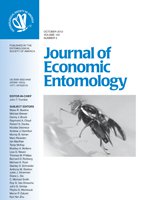American foulbrood, because of its virulence and worldwide spread, is currently one of the most dangerous diseases of honey bees. Quick diagnosis of this disease is therefore vitally important. For its successful eradication, however, all the hives in the region must be tested. This is time consuming and costly. Therefore, a fast and sensitive method of detecting American foulbrood is needed. Here we present a method that significantly reduces the number of tests needed by combining batches of samples from different hives. The results of this method were verified by testing each sample. A simulation study was used to compare the efficiency of the new method with testing all the samples and to develop a decision tool for determining when best to use the new method. The method is suitable for testing large numbers of samples (over 100) when the incidence of the disease is low (10% or less).
How to translate text using browser tools
1 October 2012
A New Low-Cost Procedure for Detecting Nucleic Acids in Low-Incidence Samples: A Case Study of Detecting Spores of Paenibacillus larvae from Bee Debris
Stepan Ryba,
Pavel Kindlmann,
Dalibor Titera,
Marcela Haklova,
Pavel Stopka
ACCESS THE FULL ARTICLE
It is not available for individual sale.
This article is only available to subscribers.
It is not available for individual sale.
It is not available for individual sale.

Journal of Economic Entomology
Vol. 105 • No. 5
October 2012
Vol. 105 • No. 5
October 2012
AFB
Apis mellifera
honey bee
matrix
polymerase chain reaction (PCR)




